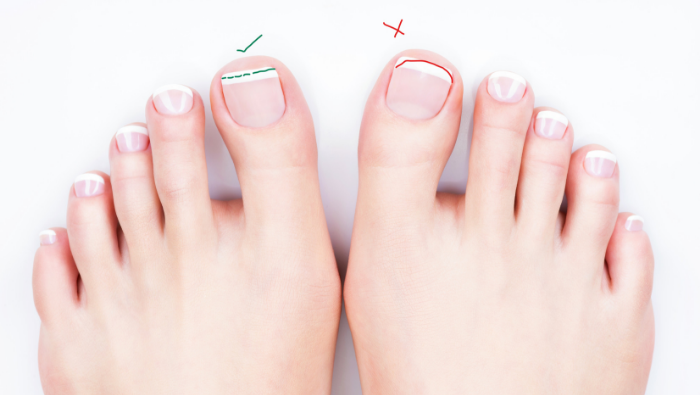Introduction:
Proper toenail care is an essential aspect of overall foot health, contributing to both comfort and hygiene. Neglecting toenail maintenance can lead to a myriad of issues, ranging from ingrown toenails to fungal infections, causing discomfort and potentially impacting one’s mobility. Understanding the significance of regular toenail care and adopting proper techniques can help prevent such complications and promote overall well-being.
In the following discussion, we will explore the importance of maintaining toenail health, delve into the optimal frequency of toenail maintenance, and outline the basic tools required for effective toenail cutting. As a foundational element of foot care, the condition of toenails can reflect broader health concerns and warrant dedicated attention.
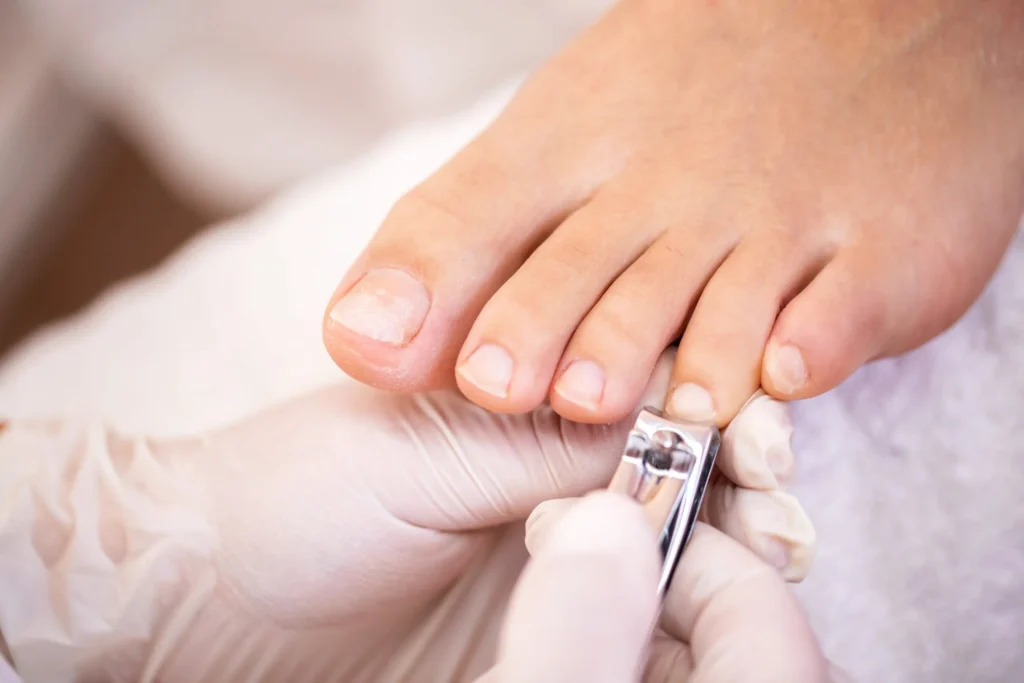
Contents
Frequency of Toenail Maintenance
The frequency of toenail maintenance is often underestimated, yet it plays a pivotal role in preventing complications. Whether you are a seasoned practitioner of self-pedicures or a novice in the realm of foot care, establishing a routine for toenail maintenance is crucial. This routine not only addresses aesthetic concerns but also serves as a proactive measure against common issues like ingrown toenails, fungal infections, and discomfort associated with improperly trimmed nails.
To embark on this journey of toenail care, understanding the basic tools involved is imperative. The choice of toenail clippers and nail files significantly impacts the effectiveness and precision of the process. We will explore the criteria for selecting the right type of toenail clippers, ensuring their sharpness for optimal performance, and the additional benefits of incorporating a nail file into your toenail care routine.
As we navigate through the intricacies of toenail care, it is essential to recognize that this process extends beyond mere grooming. It is a fundamental component of self-care that contributes to the overall health and functionality of our feet. By incorporating proper toenail care into our routine, we not only enhance our physical well-being but also foster a sense of personal hygiene and satisfaction.
Gathering Supplies:
To embark on the journey of toenail care, assembling the right tools is paramount. Each element of the toolkit plays a crucial role in ensuring an effective and precise toenail cutting experience. In this section, we will delve into the details of the essential supplies, focusing on toenail clippers and nail files, and their pivotal role in achieving optimal results.
Toenail clippers stand as the primary instrument in the toenail care arsenal, and selecting the right type is key. Different designs cater to varying preferences and toenail conditions. We will explore the intricacies of choosing the appropriate toenail clippers, considering factors such as size, shape, and material. Additionally, ensuring the sharpness of the clippers is a vital aspect often overlooked but indispensable for a clean and pain-free toenail trimming experience.
Complementing the toenail clippers, a nail file is an indispensable tool for refining the edges and shaping the nails. Understanding the nuances of using a nail file effectively will not only contribute to the aesthetics of the toenails but also prevent potential snags and irregularities. We will discuss the benefits of smoothing the edges and shaping the nails using a nail file, ensuring a polished and well-finished outcome.
Preparing Feet for Toenail Cutting:
To achieve an effective and comfortable toenail cutting experience, proper preparation of the feet is a crucial step. In this section, we will explore the significance of soaking the feet and the subsequent importance of thorough drying. These preparatory measures not only enhance the overall experience but also contribute to the prevention of potential complications associated with toenail care.

Soaking Feet
Soaking the feet serves as a foundational element in preparing for toenail cutting. The benefits extend beyond mere relaxation, as the warm water facilitates the softening of the toenails, making them more pliable for trimming. We will delve into the advantages of using warm water for soaking, along with considerations for incorporating Epsom salt or soap to enhance the overall experience. Understanding the dynamics of foot soaking sets the stage for a more effective and less taxing toenail cutting session.
Equally crucial to the soaking process is ensuring that the feet are thoroughly dried before proceeding with toenail cutting. Dampness in the toenail area can not only complicate the trimming process but also create an environment conducive to infections. We will discuss the importance of drying the feet carefully, emphasizing the prevention of infections and reducing the risk of slipping during the toenail care routine.
By paying meticulous attention to the preparation of the feet, individuals can optimize the conditions for a successful toenail cutting session. The combination of warm water soaking and thorough drying creates an environment where toenails are more manageable, reducing the likelihood of discomfort and complications. As we explore the nuances of these preparatory steps, it becomes evident that toenail care is not only about the act of trimming but also the thoughtful consideration of the conditions that contribute to a seamless and health-conscious process.
Proper Toenail Cutting Technique:
Mastering the technique for cutting toenails is essential to ensure not only a neat and aesthetically pleasing result but also to prevent potential complications such as ingrown toenails and discomfort. In this section, we will delve into the specific steps and best practices for toenail cutting, emphasizing the importance of trimming straight across and avoiding cutting too short.
The primary guideline for toenail cutting is to trim straight across. This technique minimizes the risk of ingrown toenails, a common issue that can lead to pain and inflammation. We will explore the rationale behind this approach, emphasizing its role in maintaining the natural shape of the toenails and preventing the edges from digging into the surrounding skin.
While the temptation to cut toenails as short as possible might be present, doing so carries its own set of risks. Cutting too short can lead to bleeding, increased susceptibility to infections, and heightened discomfort. We will discuss the optimal length for toenail trimming, ensuring that the nails are short enough for comfort but still allow for the natural protective function of the nail.
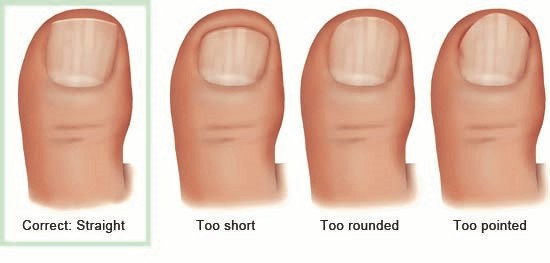
Understanding the nuances of proper toenail cutting goes beyond a mere cosmetic concern. It is an integral aspect of foot health that, when done correctly, can contribute to a pain-free and aesthetically pleasing outcome. By following the recommended technique of trimming straight across and avoiding excessive shortening, individuals can navigate the intricacies of toenail care with confidence, fostering both the health and appearance of their feet.
Dealing with Ingrown Toenails:
Addressing ingrown toenails is a critical aspect of toenail care, as these painful occurrences can lead to discomfort and potential infections. In this section, we will explore the signs of ingrown toenails, home remedies for mild cases, and when to seek professional help for more severe situations.
Identifying the signs of ingrown toenails is essential for early intervention. Common indicators include persistent pain, redness, and swelling around the affected nail. We will delve into these symptoms, emphasizing the importance of recognizing them promptly to prevent the escalation of the issue.
For mild cases of ingrown toenails, various home remedies can be employed. These include warm soaks to reduce inflammation and gentle lifting of the ingrown edge. We will discuss the benefits of these remedies, offering practical insights into their application and their effectiveness in providing relief for mild cases.
In instances where home remedies prove insufficient, or the ingrown toenail becomes recurrent and severe, seeking professional help is imperative. A consultation with a podiatrist can provide tailored solutions, and in some cases, surgical interventions may be necessary. We will explore the scenarios where professional assistance becomes crucial, emphasizing the role of a podiatrist in addressing severe ingrown toenails.
By understanding the signs of ingrown toenails and adopting appropriate measures for both home care and professional intervention, individuals can effectively manage and prevent the complications associated with this common toenail issue. This comprehensive approach to dealing with ingrown toenails ensures a proactive stance toward foot health, promoting overall well-being and comfort.
Aftercare:
The aftercare following toenail cutting is a crucial step in maintaining foot health and preventing complications. In this section, we will discuss the importance of cleaning nail clippers and moisturizing the feet, emphasizing their roles in preventing infections, promoting hygiene, and enhancing overall foot well-being.
Cleaning nail clippers is often an overlooked aspect of toenail care but is vital for preventing infections. We will explore the potential risks associated with unclean tools, emphasizing the importance of regular cleaning to remove debris, bacteria, and fungi that may accumulate during the toenail cutting process. This step not only promotes personal hygiene but also contributes to the longevity and effectiveness of the nail clippers.
Moisturizing the feet is equally essential in the aftercare routine. Proper hydration prevents dry skin, reduces the risk of cracks, and maintains the overall health of the feet. We will discuss the benefits of using moisturizers specifically designed for feet, emphasizing their role in preventing discomfort and complications that may arise from excessively dry skin.
By incorporating these aftercare practices into the toenail care routine, individuals can enhance the overall effectiveness of their foot care regimen. The combination of clean tools and well-moisturized feet contributes to a healthier and more comfortable foot environment, reducing the likelihood of infections and discomfort. In essence, aftercare is not just a concluding step; it is a proactive measure that promotes ongoing foot health and well-being.
Common Mistakes to Avoid:
In the realm of toenail care, understanding and avoiding common mistakes are paramount to preventing discomfort, injuries, and potential complications. In this section, we will discuss two prevalent mistakes – cutting toenails too short and using improper tools – and their associated risks.
Cutting toenails too short is a common error that can lead to various issues. We will explore the risks of this mistake, including the potential for bleeding, increased susceptibility to infections, and heightened discomfort. Emphasizing the importance of maintaining an optimal nail length, we will provide practical guidance on how to avoid the pitfalls associated with excessively short toenails.
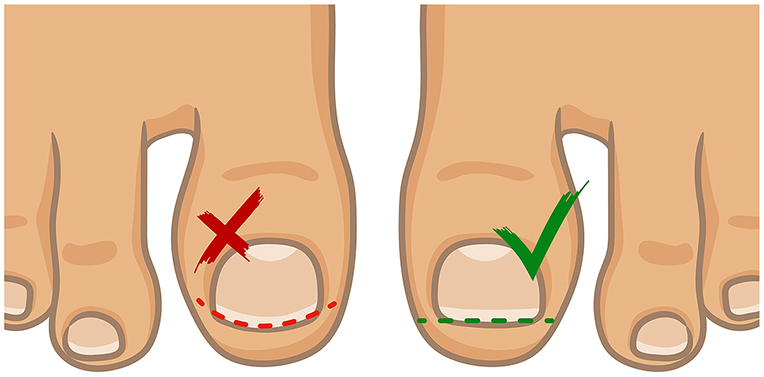
Using improper tools for toenail cutting is another mistake that individuals often make, underestimating the significance of quality clippers. We will discuss the importance of choosing the right type of toenail clippers, ensuring their sharpness, and avoiding the use of sharp objects that can cause injury or damage to the toenails. By understanding the repercussions of using inadequate tools, individuals can make informed decisions in selecting and maintaining their toenail care instruments.
By acknowledging and rectifying these common mistakes, individuals can elevate their toenail care practices, promoting both comfort and foot health. Through a heightened awareness of the potential pitfalls and a commitment to adopting proper techniques, individuals can cultivate a proactive approach to toenail care, minimizing risks and maximizing the benefits of a well-maintained foot care routine.
Tips for Special Considerations:
Toenail care is not a one-size-fits-all practice, and certain individuals may require special considerations based on specific health conditions or age-related factors. In this section, we will explore tips for two distinct groups – individuals with diabetes and the elderly – to address their unique needs in toenail care.
For individuals with diabetes, foot care takes on added importance due to potential complications associated with the condition. We will discuss the significance of seeking professional care, emphasizing regular inspections, and highlighting the role of podiatrists in addressing specific concerns related to diabetes. The section will underscore the importance of meticulous foot care as an integral aspect of overall diabetes management.
Elderly individuals often face challenges related to mobility and may require additional assistance in toenail care. We will explore practical tips for addressing these challenges, including methods to overcome mobility issues and seeking assistance when needed. By understanding the specific needs of the elderly, individuals and caregivers can tailor toenail care practices to ensure both effectiveness and safety.
By acknowledging and implementing these tips for special considerations, individuals can adapt their toenail care routines to accommodate specific health conditions and age-related factors. A personalized approach, coupled with a commitment to regular care and professional guidance when necessary, ensures that toenail care remains an integral component of overall health and well-being, regardless of individual circumstances.
Conclusion:
As we conclude our comprehensive exploration of toenail care, it is evident that this seemingly routine practice holds significant implications for overall foot health and well-being. From the initial understanding of the importance of proper toenail care to the nuanced techniques of cutting and the considerations for special cases, each facet contributes to a holistic approach toward foot health.
Encouragement for Regular Toenail Maintenance
By recognizing the frequency of toenail maintenance and selecting the right tools, individuals can establish a foundation for effective toenail care. The preparation of the feet through soaking and thorough drying sets the stage for a comfortable and successful toenail cutting experience, while adhering to proper cutting techniques mitigates the risk of complications such as ingrown toenails.
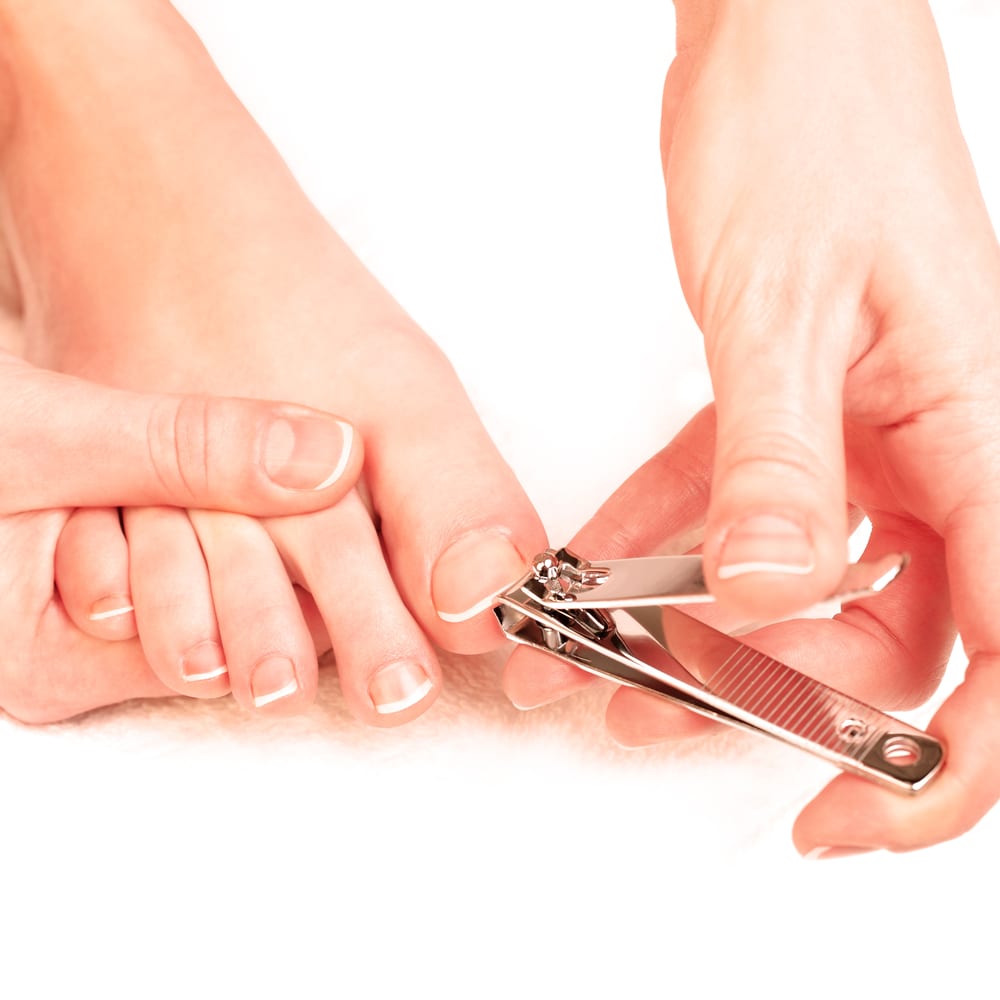
Dealing with ingrown toenails requires vigilance in identifying early signs and adopting appropriate home remedies or seeking professional help when needed. The aftercare practices of cleaning nail clippers and moisturizing the feet serve as proactive measures to prevent infections and maintain optimal foot hygiene.
Avoiding common mistakes, such as cutting toenails too short or using improper tools, and tailoring toenail care to special considerations, such as diabetes and the elderly, further enrich the understanding and application of effective foot care practices.
Overall Importance of Foot Health
In essence, toenail care transcends mere grooming; it is a mindful and ongoing commitment to personal hygiene and overall health. By incorporating the knowledge gained from this comprehensive guide into daily routines, individuals can take charge of their foot health, promoting comfort, preventing complications, and contributing to their overall sense of well-being. As we step forward with these insights, may our strides be not only sure but also comfortably anchored in the practices of thoughtful toenail care.
